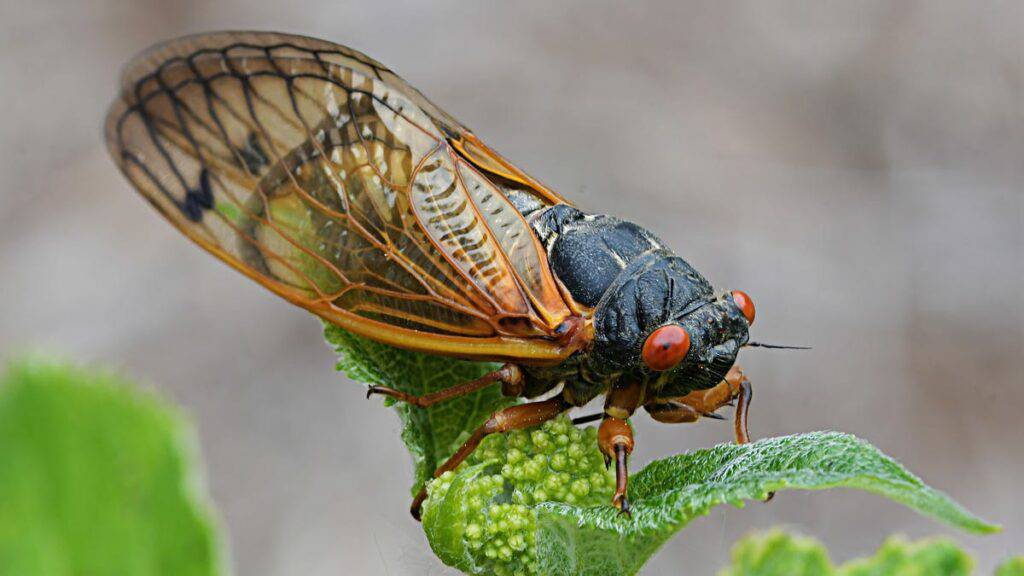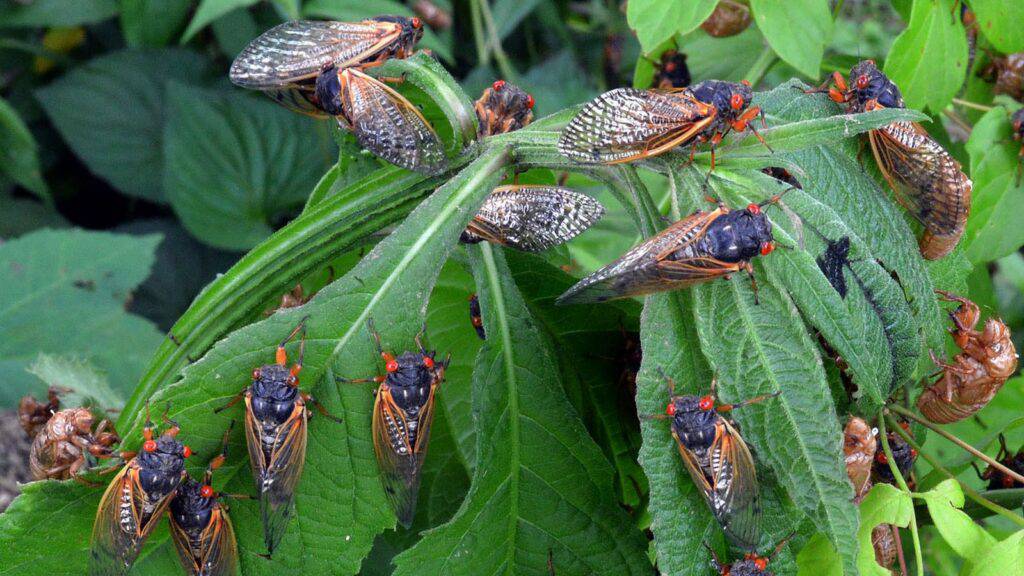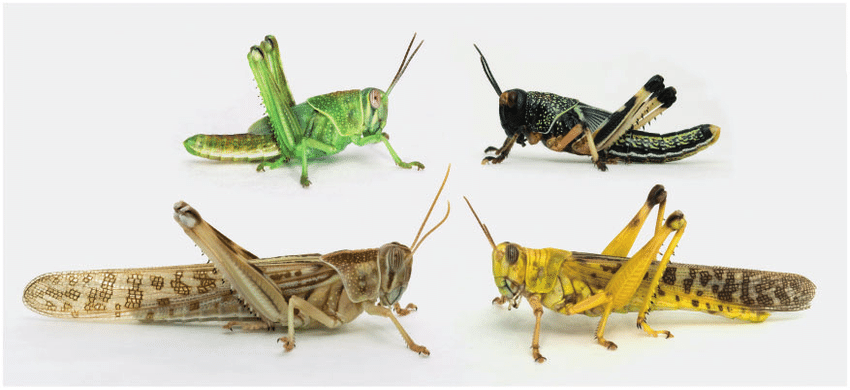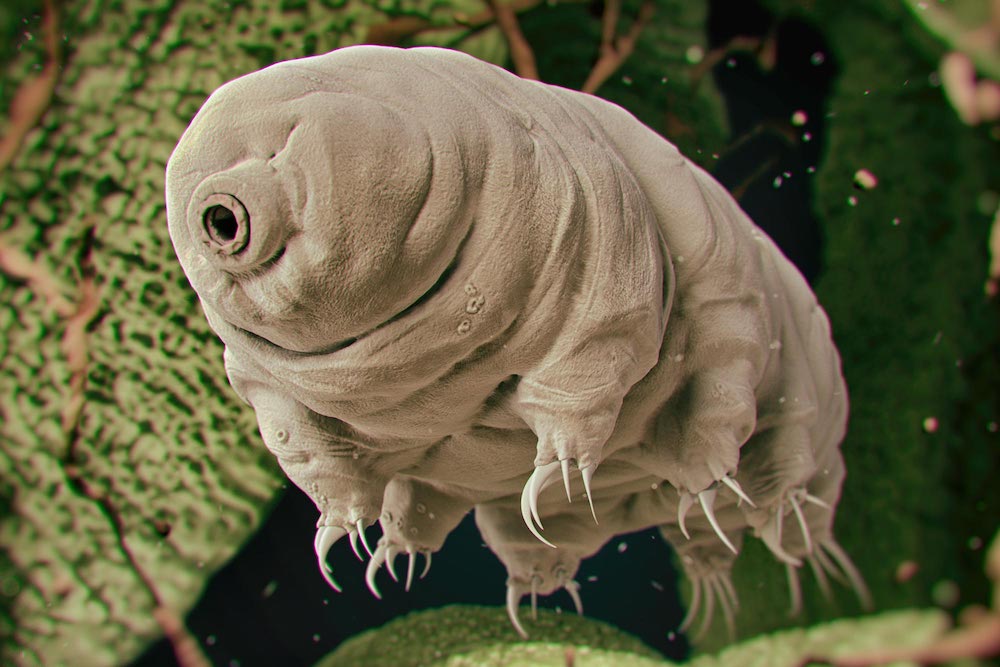The 2024 Periodic Cicada Emergence

The year 2024 marks a momentous occasion, as billions of cicadas prepare to emerge after either a 13-year or 17-year period of dormancy.
This Periodic Cicada Emergence, characterized by the simultaneous emergence of two distinct broods, Brood XIX and Brood XIII, is a rare spectacle that unfolds every 25 years.
Magicicada, or Periodical Cicadas
The Magicicada genus includes three species that emerge on a 17-year cycle and four species that emerge on a 13-year cycle. Brood XIX and Brood XIII are specific broods within this genus, each comprising a subset of these species.
For Brood XIX (Great Southern Brood), the 13-year cicada species include Magicicada tredecassini, Magicicada tredecim, Magicicada neotredecim, and Magicicada tredecula.
For Brood XIII, which emerges every 17 years, the species include Magicicada cassini, Magicicada septendecim, and Magicicada septendecula.
The Dance of Life Cycles: 13-Year and 17-Year Broods
The periodic cicadas’ choice of prime-numbered life cycles, 13 and 17 years, has been a subject of intense scientific speculation. Theories abound regarding the evolutionary advantage conferred by these seemingly unconventional durations. Some researchers propose that emerging in prime-numbered years may provide a level of protection against predators with shorter life cycles, such as those with 2- or 3-year spans.
Once above ground, the adult cicadas will engage in a flurry of activities that define their short yet impactful life cycle. The air will be filled with the resonant and sometimes deafening songs of the males, a symphony that serves both as a mating call and a territorial assertion. The vibrant chorus, resembling a surreal Mardi Gras celebration, becomes a sonic marker of the transient period during which these insects fulfill their ecological roles.
Mating rituals among periodical cicadas are as fascinating as they are essential for the continuation of their species. The males, with their distinctive calls, attract potential mates. The females respond to these calls, and the intricate dance of courtship ensues. Once mating is complete, the females lay their eggs in the branches of trees, kickstarting the next generation of cicadas that will burrow into the soil to begin the cycle anew.
As the six-week period progresses, the vibrant symphony of the cicadas will gradually wind down. The once-active landscapes will return to a semblance of quietude as the adult cicadas complete their life cycle, eventually succumbing to the inevitable fate of nature. Their bodies, now spent, become part of the ecosystem, providing sustenance for other creatures and contributing to the intricate web of life.

A Once-in-a-Generation Cicada Emergence
The emergence of periodical cicadas is already a rare and remarkable occurrence, with broods spanning either 13 or 17 years, depending on the species. What makes the 2024 event particularly extraordinary is the simultaneous emergence of two distinct broods: Brood XIX, a 13-year cycle known as the Great Southern Brood, and Brood XIII, a 17-year cycle named the Northern Illinois Brood. According to Dr. Jonathan Larson, an extension entomologist, the size of this double brood emergence is an absolute oddity of nature.
The last time a 13-year brood coincided with a 17-year brood was in 2015. However, the specific pairing of Brood XIX and Brood XIII hasn’t occurred since 1803. The rarity of such events captures the imagination of scientists and nature enthusiasts alike, as they witness a convergence that defies the typical cadence of cicada life cycles.
Notably, the adjacent emergence of 13- and 17-year broods in the same year is an event that transpires roughly every 5-6 years. However, the co-occurrence of Brood XIX and Brood XIII is even more infrequent, happening for the first time since 1998.
The next occurrence of such a synchronized event is not expected until 2049, emphasizing the rarity of these overlapping life cycles. The information gathered during the 2024 emergence will contribute to our understanding of cicada biology and ecology, providing valuable insights for the conservation and management of these fascinating insects.
Cicada Symphony: When and Where They Emerge
The magic number for the emergence of periodical cicadas is 64 degrees Fahrenheit (about 18 degrees Celsius) at a depth of 8 inches in the soil. When the soil temperature reaches this threshold, it serves as a signal for the cicada nymphs to prepare for their grand entrance into the world above ground. This remarkable coordination ensures that the emergence occurs en masse, creating a cacophony that resonates through the landscapes they inhabit.
The much-anticipated emergence is expected to occur sometime in mid-May. This window, influenced by the delicate interplay of climatic conditions, sets the stage for a six-week period of frenzied activity among the cicadas. The mid-May timeframe aligns with the warming temperatures of spring, creating an optimal environment for the adult cicadas to thrive and carry out their essential life functions.
Brood XIII and Brood XIX Meet
While the geographic ranges of Brood XIII and Brood XIX don’t traditionally overlap significantly, there’s a historical affinity in the vicinity of Springfield. Maps depicting past emergences reveal a subtle dance between the two broods, creating areas where their territories come close to each other. This historical proximity, though, has not always led to notable co-emergences, and predictions of a widespread overlap in 2024 may be exaggerated.
Estimating the population size of periodical cicadas is a challenging task, with densities potentially exceeding a million per acre during past emergences. The intricate variability across space and time adds to the complexity of predicting their numbers. The notion of trillions of cicadas being present during the 2024 emergence, spanning from Maryland to Oklahoma, Illinois to Alabama, emphasizes the sheer scale of this natural phenomenon.
Despite the potential convergence, researchers, including Dr. Chris Simon, emphasize that the 2024 co-emergence may not result in extreme or “double” densities outside the norm of typical periodical cicada emergence years. The cicadas from Brood XIII and Brood XIX are expected to be distinguishable primarily based on their life cycles.
The 2024 Periodical Cicada Emergence










